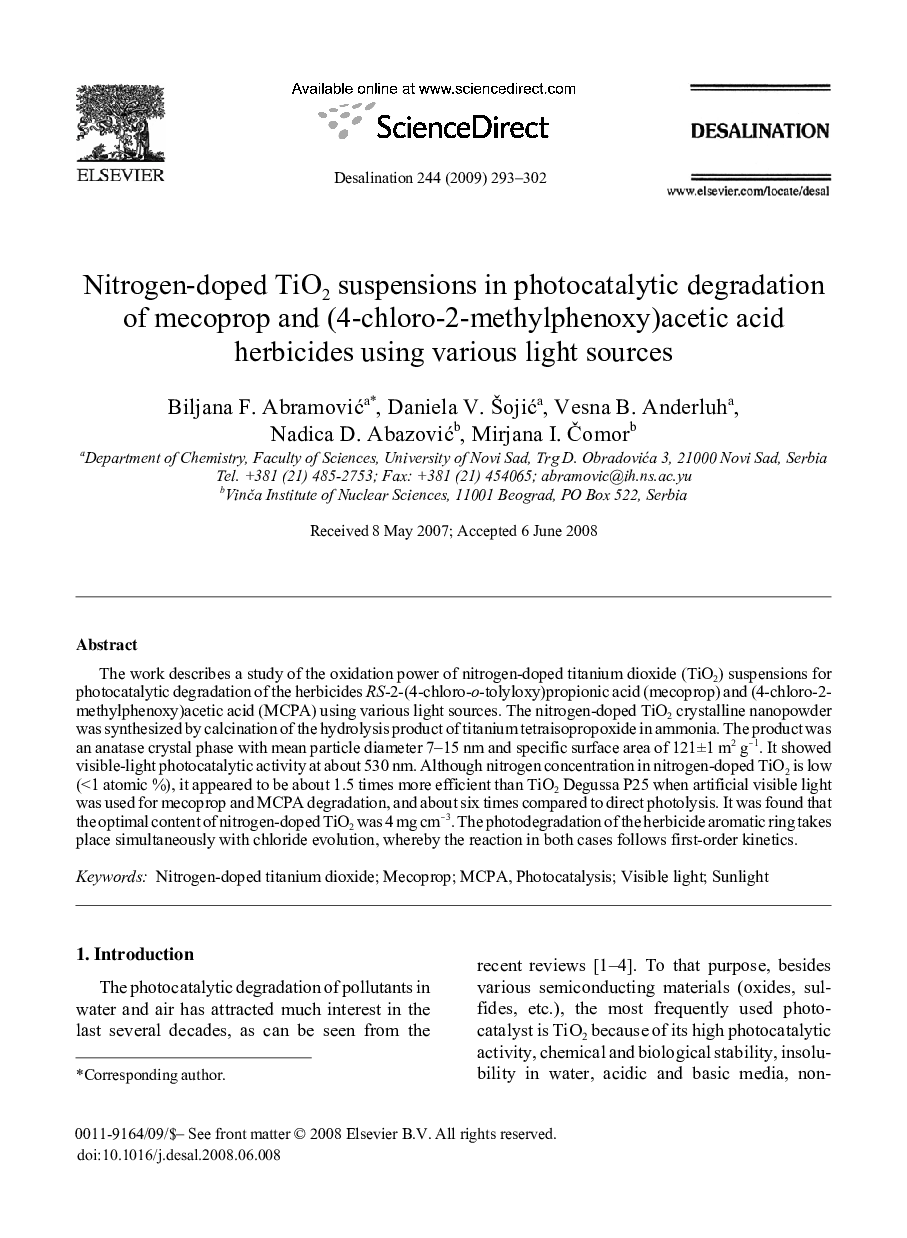| Article ID | Journal | Published Year | Pages | File Type |
|---|---|---|---|---|
| 626729 | Desalination | 2009 | 10 Pages |
The work describes a study of the oxidation power of nitrogen-doped titanium dioxide (TiO2) suspensions for photocatalytic degradation of the herbicides RS-2-(4-chloro-o-tolyloxy)propionic acid (mecoprop) and (4-chloro-2-methylphenoxy)acetic acid (MCPA) using various light sources. The nitrogen-doped TiO2 crystalline nanopowder was synthesized by calcination of the hydrolysis product of titanium tetraisopropoxide in ammonia. The product was an anatase crystal phase with mean particle diameter 7–15 nm and specific surface area of 121 ± 1 m2 g−1. It showed visible-light photocatalytic activity at about 530 nm. Although nitrogen concentration in nitrogen-doped TiO2 is low (<1 atomic %), it appeared to be about 1.5 times more efficient than TiO2 Degussa P25 when artificial visible light was used for mecoprop and MCPA degradation, and about six times compared to direct photolysis. It was found that the optimal content of nitrogen-doped TiO2 was 4 mg cm−3. The photodegradation of the herbicide aromatic ring takes place simultaneously with chloride evolution, whereby the reaction in both cases follows first-order kinetics.
